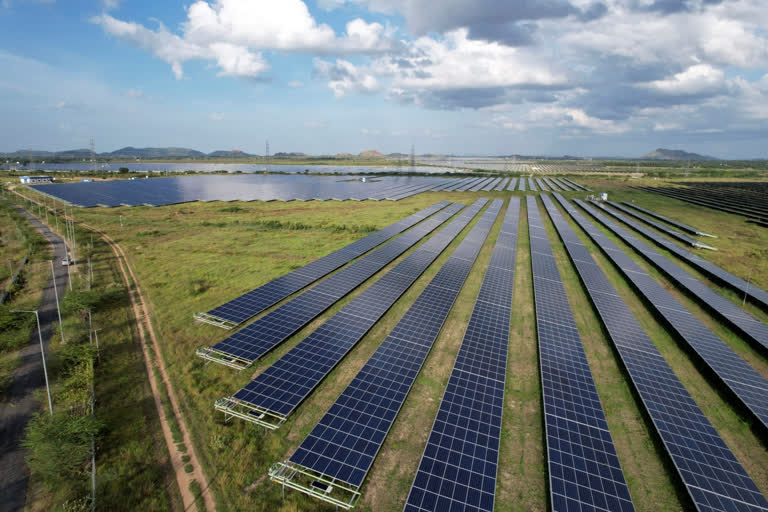Bengaluru: For six years, Pravinbhai Parmar's farm in Gujarat state in western India has been lined with rice, wheat and solar panels. The 36-year-old is among a handful of farmers in his native Dhundi village who have been using solar power to irrigate crops. “I was spending nearly 50,000 rupees ($615) every year to water my crops,” said Parmar. “With solar I spend nothing." Parmar also sells the excess electricity to his state’s grid, earning an average of 4,000 rupees ($50) a month. "It’s a win-win in every way,” he said.
Thousands of farmers have been encouraged to take up solar power for irrigation in the agriculture-rich state as India aims to reach ‘net zero’ by 2070. But livelihoods powered by clean energy are major outliers in the country that’s the third-largest emitter of planet-warming gases in the world, and last year announced its biggest-ever auction for coal mines.
Coal’s share in producing electricity for Gujarat fell from 85% to 56% in the last six years, according to analysis by London-based energy think tank Ember. The share of renewable energy for the state grew from 9% to 28% in the same period. But Gujarat is just one of four of India's 28 states that met their renewable energy targets for 2022. Most states have installed less than 50% of their targets and some states such as West Bengal have installed only 10% of their target.
Nationwide fossil fuels generate more than 70% of India’s electricity and have been doing so for decades. Coal is by far the largest share of dirty fuels. Renewable energy currently contributes about 10% of India’s electricity needs. From 2001 to 2021, India installed 168 gigawatts of coal-fired generation, nearly double what it added in solar and wind power combined, according to an analysis of Ember data. India’s federal power ministry estimates that its electricity demand will grow up to 6% every year for the next decade.
“The challenge of reducing the share of coal in the electricity generation mix is particularly acute because you are dealing with a sector that is growing rapidly,” said Thomas Spencer, energy analyst at the Paris-based International Energy Agency. Spencer said India’s quickly developing economy and growing electricity consumption per capita is causing rising demand.
“Historically, countries that have achieved substantial and rapid transitions away from coal-fired power tend to have had either slowly growing or stagnant or even slightly declining electricity demand,” he added. A report by the Global Energy Monitor ranks India among the top seven countries globally for prospective renewable power. The planned buildout of 76 gigawatts of solar and wind power by 2025 will avoid the use of almost 78 million tons of coal annually and could lead to savings of up to 1.6 trillion rupees ($19.5 billion) per year.
India missed its target to install 175 gigawatts of renewable energy to its overall power production by 2022. Experts say that to meet its 2030 renewable energy target of installing a total of 450 gigawatts, India needs to build out clean energy at a far greater rate than it is doing now.
The Indian government has repeatedly defended its use of coal and its energy transition strategy, stating that the fuel is necessary for the nation's energy security. Coal India limited, a government-owned company, is the largest state-owned coal producer in the world. It's responsible for about 82% of the total coal produced in India.
